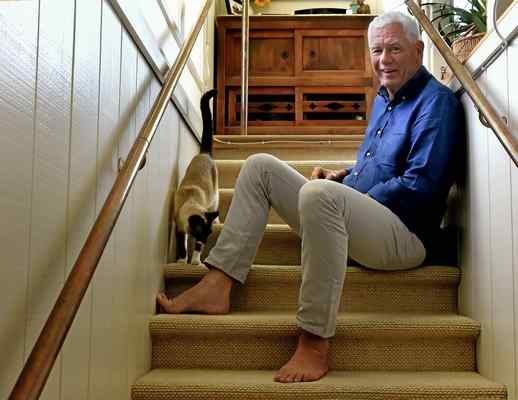
After losing both of his parents at a young age, Frank Ostaseski channeled his pain into a life of service.

Ostaseski, 65, of Sausalito, has been an advocate for contemplative end-of-life care, and was honored by the Dalai Lama for his years of service to the dying. In 1987, he co-founded the Zen Hospice Project, the first Buddhist hospice in America, and in 2004 created the Metta Institute, which teaches physicians, nurses and family members how to practice “mindful and compassionate care.”
His recent book, “The Five Invitations,” shows what dying can teach us about living.
Q What made you be a champion for mindful and compassionate care?
A Death and I became friends very early on, or at least we got acquainted very early on. My parents died when I was quite young. My mother when I was 16 and my dad a few years later, and then, I worked for a long time with kids who were severely disabled. That kind of introduced me to my life of service, and later, I worked in refugee camps in Mexico and Central America. Then, I came back and the AIDS epidemic was hitting and so, one thing was stumbling into another, in a way. And one of the things that I saw was what mattered most: not necessarily the treatment plan that the person was involved in, although that is important, but what mattered was the quality of the presence of people around him or her.
Q What are you teaching end-of-life caregivers?
A The first thing if someone is going to be a compassionate presence, is that they have to look at their own relationships to these issues — to sickness, to aging, to dying and to suffering. … We teach our physicians and nurses and others to learn to listen very precisely and not in the context of what is happening, but also to the emotional and to the somatic cues that person is giving. And then you give information in a way that is accessible to the other person.
Q You’ve sat by more than 1,000 bedsides of those who were dying; was that difficult?
A Oh, absolutely. It’s a lot. I try to be real with people, in other words, if I feel grief, I will share it. I’ll say, “I’m going to miss you.” “I’m really learning a lot from you.” “Wow, this is so sad to hear you say this.” So, it can be difficult but difficulty doesn’t stop me. During the AIDS epidemic I was working with 20 to 40 people a week who were dying, so I had to do things that really balanced me. I went to a hospital in San Francisco where my friends were nurses and they were taking care of babies that had been born to addicted mothers, and I would hold these babies in a rocking chair. There was something about that, that gave me the wherewithal, the strength, to continue and to do the work that I was called to do. I also did life-affirming things; I swam in the bay because it’s cold and it’s refreshing. I still do that.
Q What is a typical day for you?
A When I was running the Zen Hospice, I was on call 24 hours a day, seven days a week, that was my life. And I was raising four children at the same time. I retired from that, in about 2005, to focus my attention more on teaching and mentoring others. That happened partially because, after 20 years, it was time to let other people take that role, and also my children were growing up and my caregiver energy started to shift and my teaching energy came forward. I travel, quite a lot. My day often includes getting to and from airports, and then finding myself in front of a group of people, and my primary job is to keep them human. The expectations on [doctors] are really just unbelievable — they’re being driven mercilessly by a system that’s making unreasonable demands on them, so it’s natural that they start to shut down because that’s a strategy. So if we can help them stay engaged without burning out, that’s a huge gift to the world.
Complete Article HERE!
